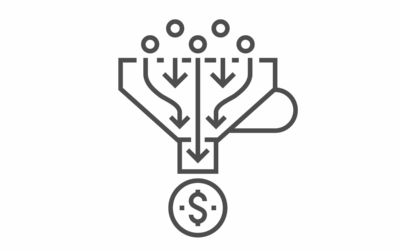Trevelino/Keller recently introduced a new philosophy around client service management, one that revolves around focus for the sake of productivity. You would think it should be a given, but in today’s multi-tasking-obsessed world, more often that’s not the case.
One Meeting, One Focus.
If you are in a meeting, that meeting should be your sole focus. Not your email, not the article you were reading before the meeting started, not your text messages, not Slack, Twitter, LinkedIn or the like. The people in and the purpose of that meeting should receive your undivided attention.
If you’re in a service-related industry with multiple clients to manage, you may be thinking this approach is just plain crazy.
Consider this, you find yourself on that reoccurring call or meeting where nothing is ever resolved; and you think to yourself, “I have a thousand pressing deadlines, and this meeting is never useful.” But you can’t get out of the meeting, so you resolve to listen in while you respond to emails or work on a proposal for someone else. Sure, technically you’re there…but you’re not present. In fact, neither task is getting your full attention. You’re half-assing both.
“FOCUS!”
What happens when you focus on the meeting and task at hand? Well, at T/K we’ve noticed a few key benefits:
- Shorter Meetings. Yes, if everyone is focused and paying attention, then you can move through the topics quickly.
- More Fruitful Discussions. When you are present and focused, you can contribute more thoughtfully to the conversation at hand.
- More Respect. Yep, I said it. You actually show respect for your coworkers when you pay attention to the ideas and contributions they bring to the table.
Listen
The key concept here is listening. According to Google, to listen is to:
- Give one’s attention to a sound.
- To take notice of and act on what someone says; respond to advice or a request.
- Make an effort to hear something; be alert and ready to hear something.
Think about this definition. In your earlier meeting, when you were “listening” while also checking email and considering your next meal, were you making an effort to hear? Were you ready and alert? Were you taking notice of the conversation around you? If you weren’t focused and listening with intent, then the answer is a resounding no.
Julian Treasure, a renowned expert on sound and listening, offers tips on how to improve your listening in his 2011 TedTalk. He notes that while we spend 60% of our time listening, we aren’t very good at it. Moreover, we only retain 25% of what we hear. Listening is more than hearing. Listening is the process of extraction —it is our access to understanding. However, with writing, audio recording and now video recording, the premium on accurate and careful listening in the moment is disappearing according to Treasure. Treasure’s tips on better listening should be coupled with focused intent, which he calls conscious listening.
Combat the Noise
In today’s highly digital world, computer screens and mobile phones make it difficult for people to actively listen (i.e., tune out the noise). If it’s your meeting, help combat multitasking and half-listening by addressing the environment in which you are speaking:
- Ensure the room you have chosen for your meeting is appropriate for the occasion. Is it a quiet space? Is it too large and therefore people have spread too far apart? Is it too small, so that people have to stand or crowd around?
- Plan meetings at times that make sense for the group. For example, is an 11 am meeting ideal when everyone on the team has a noon deadline for a company report?
- Create an essential technology rule. Is it necessary for everyone to have their computers? If not, consider a closed-lap-top or no-mobile-phone meeting.
- For phone meetings, consider teleconferencing to ensure people are more engaged. In a recent Forbes article, consultant and author Scott Edinger notes that video conferencing adds more time to your schedule by reducing the duration of meetings while increasing focus.
Entering conversations and meetings with the intent to listen is key to our One Meeting, One Focus policy. When you enter without intention, the urge to multitask will take over at the first text message ping.
Do you have tips for ensuring that your meetings are running smoothly and that you are heard? We’d love to hear from you.


